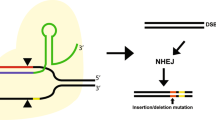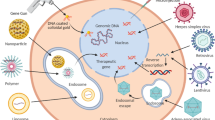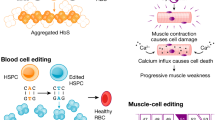Abstract
Gene targeting is the use of homologous recombination to make defined alterations to the genome. One of the possible outcomes of gene targeting is the accurate correction of genetic defects, and this would make it the ideal method of gene therapy for single gene disorders. While gene targeting has been achieved both in human cell lines and in nontransformed, primary human cells, its low efficiency has been a major limitation to its therapeutic potential. Gene therapy by in vivo gene targeting is therefore impractical without dramatic improvements in targeting efficiency. Ex vivo approaches might more realistically be considered, but would benefit from progress in the isolation and growth of somatic stem cells and improvements in targeting efficiency. We provide here a brief review of the challenges of gene therapy by gene targeting. This is followed by a critical overview of recent developments in gene targeting techniques, and in our understanding of the underlying processes of homologous and nonhomologous recombination.
This is a preview of subscription content, access via your institution
Access options
Subscribe to this journal
Receive 12 print issues and online access
$259.00 per year
only $21.58 per issue
Buy this article
- Purchase on Springer Link
- Instant access to full article PDF
Prices may be subject to local taxes which are calculated during checkout
Similar content being viewed by others
Author information
Authors and Affiliations
Rights and permissions
About this article
Cite this article
Yáñez, R., Porter, A. Therapeutic gene targeting. Gene Ther 5, 149–159 (1998). https://doi.org/10.1038/sj.gt.3300601
Published:
Issue Date:
DOI: https://doi.org/10.1038/sj.gt.3300601
Keywords
This article is cited by
-
Molecular Evidence of Genome Editing in a Mouse Model of Immunodeficiency
Scientific Reports (2018)
-
Inactivation of Pol θ and C-NHEJ eliminates off-target integration of exogenous DNA
Nature Communications (2017)
-
Current Progress in Therapeutic Gene Editing for Monogenic Diseases
Molecular Therapy (2016)
-
The Gene Targeting Approach of Small Fragment Homologous Replacement (SFHR) Alters the Expression Patterns of DNA Repair and Cell Cycle Control Genes
Molecular Therapy - Nucleic Acids (2016)
-
Mechanisms of gene targeting in higher eukaryotes
Cellular and Molecular Life Sciences (2016)



